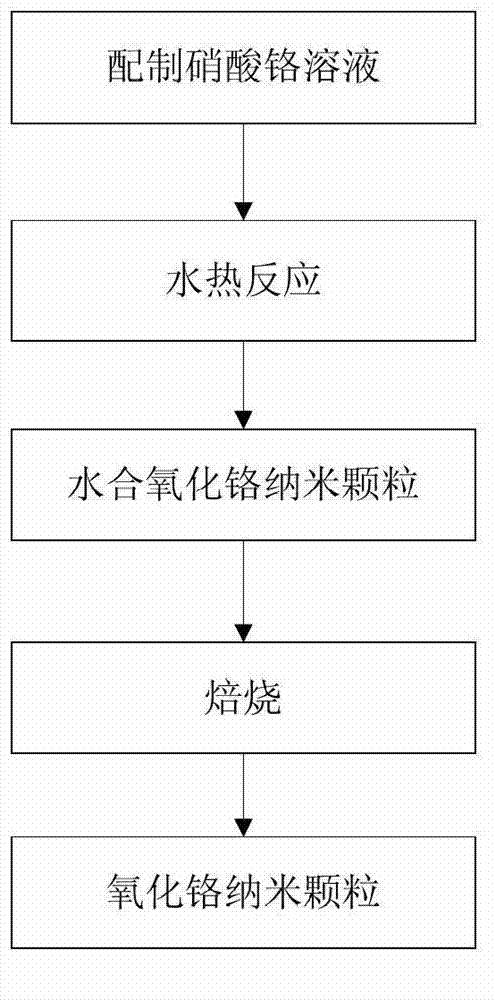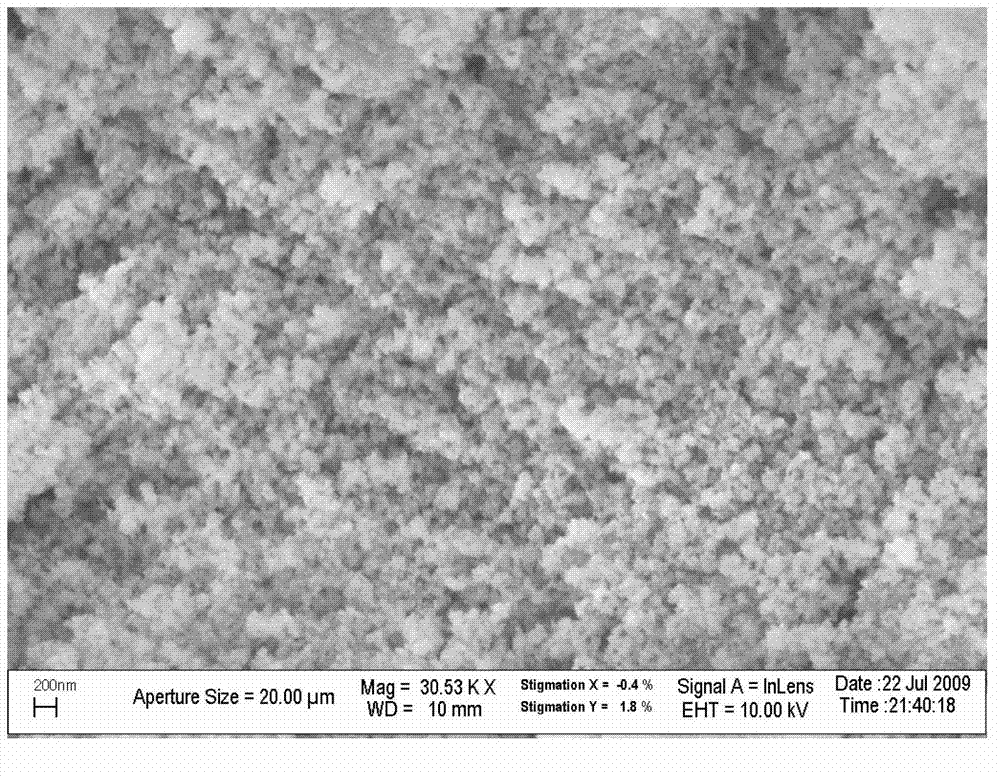Preparation method for chromium oxide nanometer materials
A technology of nanomaterials and chromium oxide, which is applied in the field of preparation of chromium oxide (Cr2O3) nanomaterials, can solve the problems of high toxicity of raw materials, many parameters, and difficulty in obtaining high-quality products, and achieve easy industrialized large-scale production and simple production process , the effect of excellent thermal stability
- Summary
- Abstract
- Description
- Claims
- Application Information
AI Technical Summary
Problems solved by technology
Method used
Image
Examples
Embodiment 1
[0019] In the hydrothermal kettle, add the deionized water of 120ml, then add 14.46g Cr(NO 3 ) 3 9H 2 O, stirred until completely dissolved to obtain a light green clear chromium nitrate solution. Seal the hydrothermal kettle well, and conduct a hydrothermal reaction at 190° C. for 24 hours. The product after the hydrothermal reaction was filtered, washed with deionized water, and dried at 110° C. to obtain hydrated chromium oxide (CrOOH) nanoparticles. The hydrated chromium oxide (CrOOH) nanoparticles were calcined at 400°C for 1 hour to obtain chromium oxide nanoparticles. Observed under the electron microscope, the diameter of this kind of nanocomposite particles is 33nm, the particles are spherical, uniform, and have good dispersion, and the specific surface area is 55.6m 2 / g. XRD measurement results show that chromium oxide has a better crystal form.
Embodiment 2
[0021] Using the preparation process of the above-mentioned Example 1, the difference is that the hydrated chromium oxide (CrOOH) nanoparticles were calcined at 600°C for 1 hour to obtain chromium oxide nanoparticles with an electron microscope observation of an average particle size of 52nm and a specific surface area of 39.5. m 2 / g, XRD measurement results show that chromium oxide has a better crystal form.
Embodiment 3
[0023] Using the preparation process of the above-mentioned Example 1, the difference is that the hydrated chromium oxide (CrOOH) nanoparticles were calcined at 800°C for 1 hour to obtain chromium oxide nanoparticles with an electron microscope observation of an average particle size of 70nm and a specific surface area of 28.1 m 2 / g, XRD measurement results show that chromium oxide has a better crystal form.
PUM
| Property | Measurement | Unit |
|---|---|---|
| specific surface area | aaaaa | aaaaa |
| specific surface area | aaaaa | aaaaa |
Abstract
Description
Claims
Application Information
 Login to View More
Login to View More - R&D
- Intellectual Property
- Life Sciences
- Materials
- Tech Scout
- Unparalleled Data Quality
- Higher Quality Content
- 60% Fewer Hallucinations
Browse by: Latest US Patents, China's latest patents, Technical Efficacy Thesaurus, Application Domain, Technology Topic, Popular Technical Reports.
© 2025 PatSnap. All rights reserved.Legal|Privacy policy|Modern Slavery Act Transparency Statement|Sitemap|About US| Contact US: help@patsnap.com


